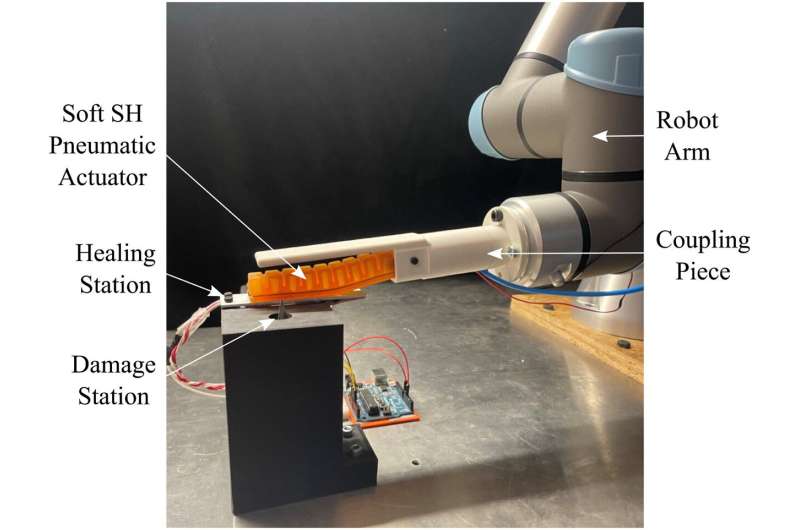The automatic robotic system for testing the healability of pneumatic SH actuators. Characterization of the actuator continuously occurs as it is repeatedly damaged at the “Damage Station” and repaired at the “Healing Station.” SH, self-healing. Credit: Robotics Reports (2023). DOI: 10.1089/rorep.2023.0014
A new study assesses the maximum number of damage and healing cycles a self-healing actuator can endure. The study, which presents a method to automatically and autonomously assess the repeatable healability of a soft self-healing actuator, is published in the journal Robotics Reports.
Julie Legrand, Ph.D., from Eindhoven University of Technology, and co-authors from Vrije Universiteit Brussel, Imec Brussels, and University of Cambridge, used a robotic system composed of a damage station and a healing station, in which the actuator is automatically moved between using a robotic arm.
"We present a typical use case of the system, performing and analyzing 63 damage cycles of a self-healing Diels-Alder actuator," stated the investigators. "After 53 cycles, the actuator will never properly heal again, therefore, we consider this cycle to be the maximum repeatable healability of the tested actuator."
"Self-healing (SH) polymers have the potential to prevent soft robot actuators being disposed due to permanent damage. Theoretically, SH polymers can endure an infinite amount of damage and healing cycles. Nevertheless, it is of utmost importance to experimentally know the maximum repeatable healability of SH actuators in soft robots, which is confirmed by the study," says Surya Nurzaman, Ph.D., Editor-in-Chief of Robotics Reports, from Monash University Malaysia.
More information: Julie Legrand et al, Autonomous Testing of the Repeatable Healability of Pneumatic Self-Healing Soft Actuators, Robotics Reports (2023). DOI: 10.1089/rorep.2023.0014
Provided by Mary Ann Liebert, Inc
























